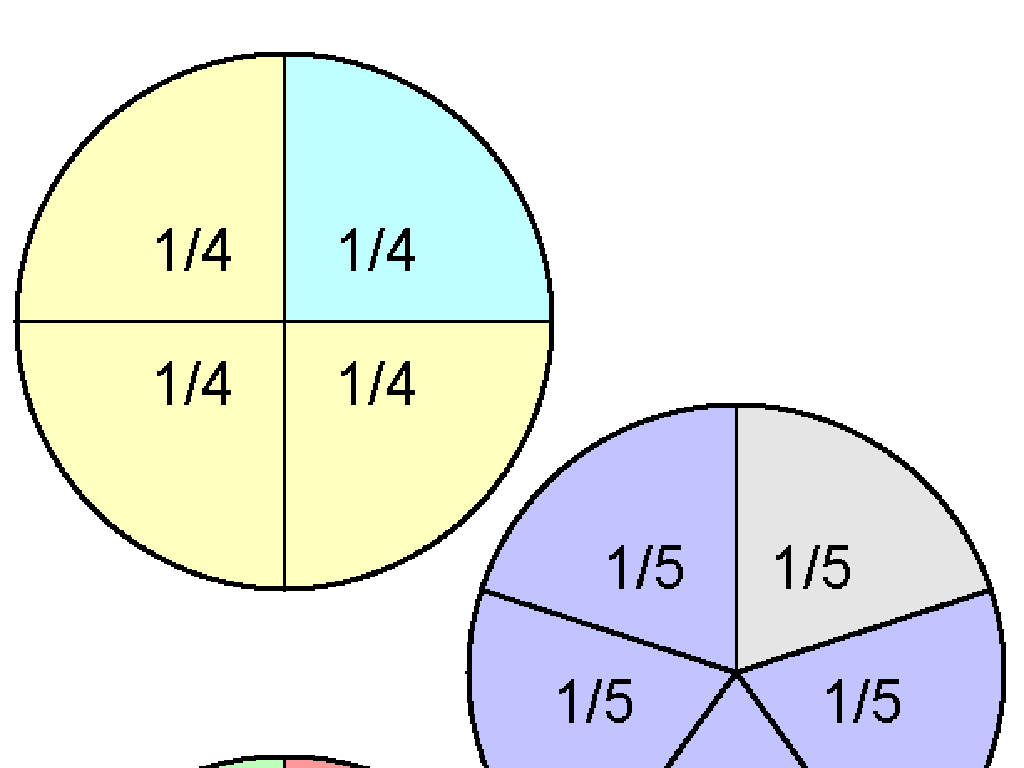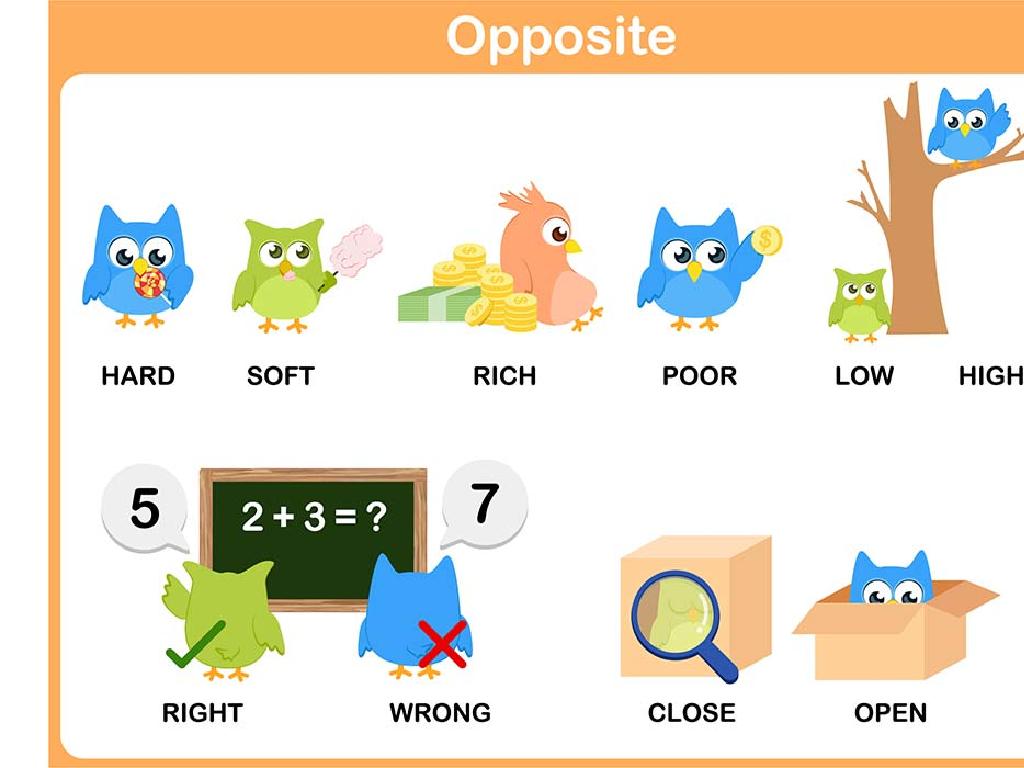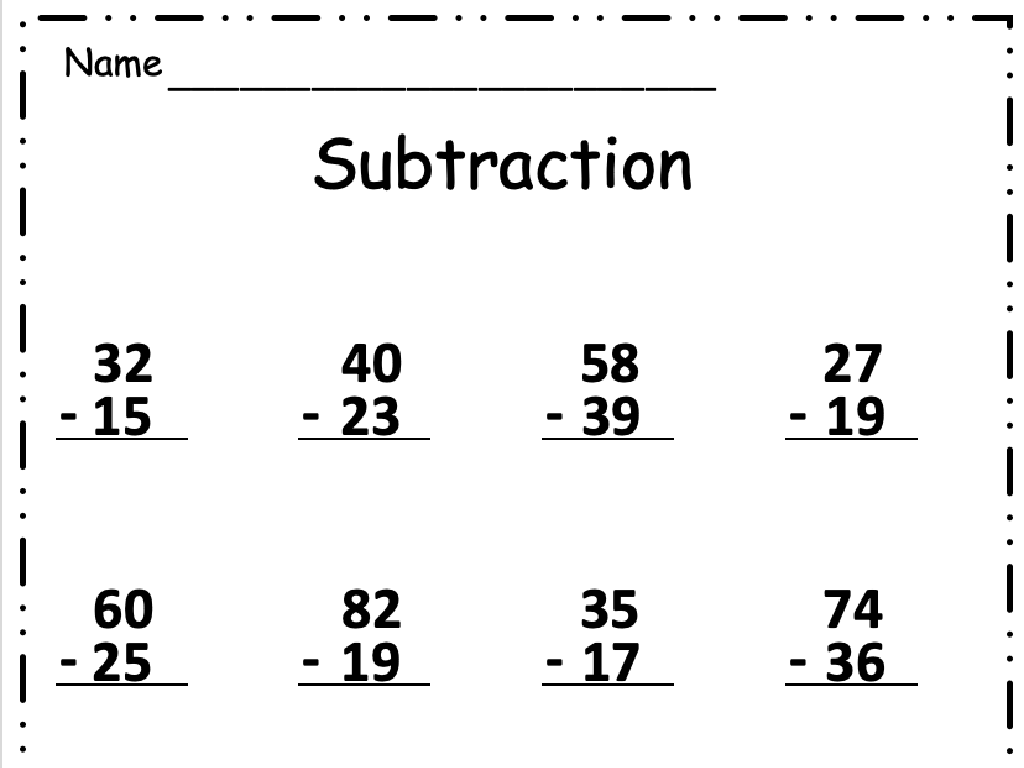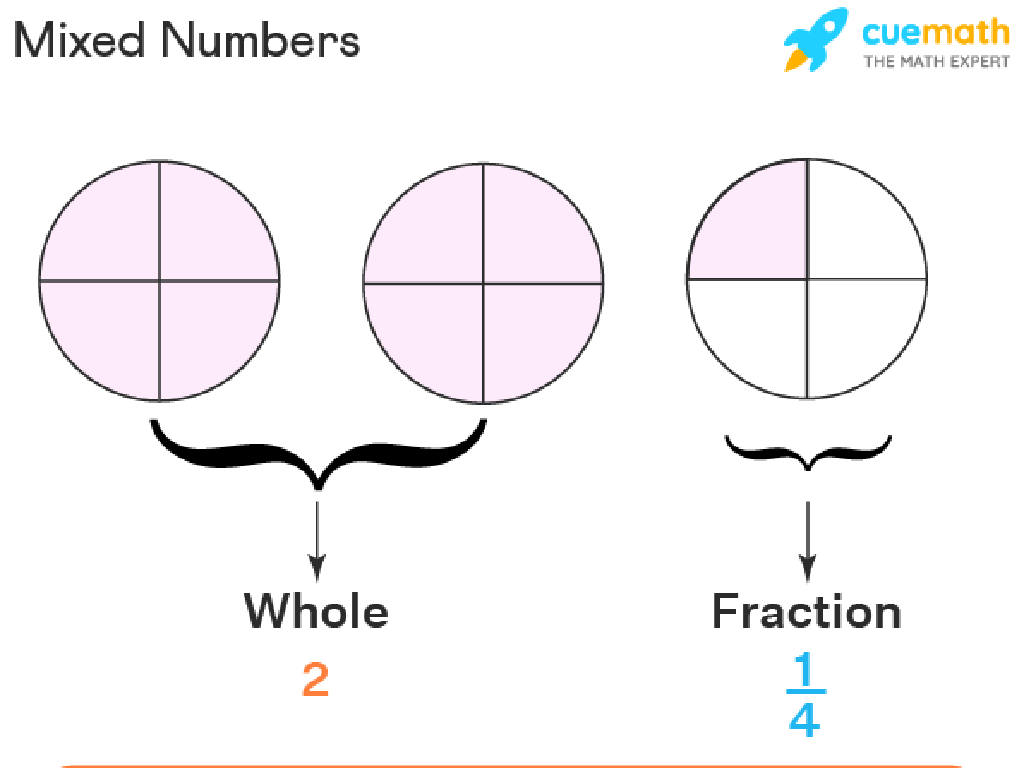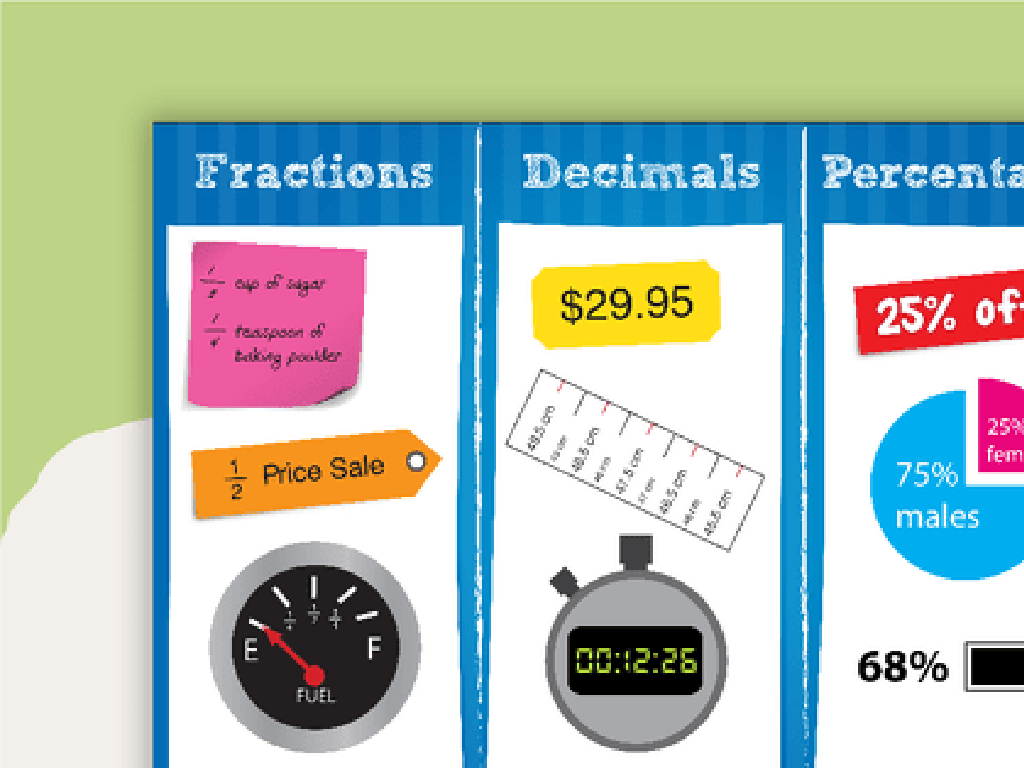Months Of The Year
Subject: Social studies
Grade: First grade
Topic: Ordering Events
Please LOG IN to download the presentation. Access is available to registered users only.
View More Content
Welcome to the Months of the Year!
– Learn the 12 months in order
– How a year is divided
– A year has 12 parts called months
– Why months help us plan
– Months help us know when things will happen
– Practice ordering events
– We’ll arrange events in the months they occur
|
This slide introduces first graders to the concept of months and how they help us organize time throughout the year. Start by reciting the months in order and then explain that a year is split into 12 months, just like a pizza can be cut into 12 slices. Emphasize the importance of knowing the months to plan for holidays, birthdays, and other events. Engage the class with an activity where they place events in the correct order on a calendar. This will help them understand the sequence of months and how events are spread throughout the year.
Learning About Months
– What are months?
– Months are big groups of days put together.
– A year has 12 months
– Just like a dozen eggs, there are 12!
– Every month’s unique name
– Like January, February, March, and so on.
– Months help us organize time
|
This slide introduces the concept of months to first graders. Begin by explaining that months are larger divisions of time, made up of days, and there are 12 of them in one year. Each month has its own special name, which helps us remember important dates like birthdays and holidays. Use a calendar to show the students the months in order and highlight the unique number of days in each. Encourage the children to say the names of the months out loud and to think about what special events happen in each month, such as Halloween in October or their own birthday.
The Names of the Months
– Learn the 12 month names
– January, February, March, and so on
– Months for planning fun
– We use months to decide when we do things
– Birthdays and holidays by month
– Each month has special days like your birthday or Christmas!
– Practice saying months in order
– Let’s say them together: January, February, March…
|
This slide is aimed at helping first graders become familiar with the names of the months and understand their use in everyday life. Start by reciting the months in order and encourage the children to repeat after you. Explain that months are like a big calendar that help us know when to do certain activities, such as going to school or taking vacations. Highlight that special occasions like birthdays and holidays happen in specific months, which makes them even more exciting. Engage the class by asking them to share what special events they celebrate in different months. Practice the sequence of months several times to help them memorize the order.
Seasons and Months
– Months grouped by seasons
– Winter, Spring, Summer, Fall each have specific months
– Winter months exploration
– December, January, February are winter months
– Seasons change, activities change
– We swim in summer and sled in winter
– Class activity: Match months to seasons
|
This slide introduces the concept of seasons and how months are categorized within them. Explain that the year is divided into four seasons, each with its own set of months. Focus on winter to start with and list the months that fall into this season. Discuss how the weather changes with each season and how these changes affect our daily activities, such as swimming in the summer and sledding in the winter. For the class activity, prepare a matching exercise where students will connect months to their corresponding seasons, reinforcing their understanding of the order of months and seasons.
Ordering the Months of the Year
– January starts the year
– December ends the year
– Sing a song to remember
– Like ‘Months of the Year’ song
– Let’s order the months together
– We’ll line up the months in sequence
|
This slide is aimed at helping first graders understand the sequence of the months in a year. Start by stating that January is the first month and December is the last. Emphasize the cyclical nature of the months and how they repeat every year. Introduce a song that helps in memorizing the order of the months, which can be a fun and interactive way for the students to learn. Finally, engage the class in an activity where they can arrange the months in order, either by writing them down, using flashcards, or any other creative method suitable for their learning level. This activity will reinforce their understanding of the sequence and the concept of time within a year.
Months in Our Lives
– What is your favorite month?
– Think about why it’s special to you
– Special things in each month
– Birthdays, holidays, or seasons change
– Months lead to exciting events
– Like Halloween in October or Christmas in December
– Looking forward to holidays
|
This slide is aimed at helping first graders understand the concept of months and how they relate to events in their lives. Start by asking students about their favorite month and discuss the reasons, which could be a holiday, a birthday, or simply the weather. Then, explore what special events occur in each month, such as national holidays, family events, or seasonal changes. Emphasize how anticipating these events can be exciting and how months help us organize and plan for them. Encourage students to share their own experiences related to different months to make the lesson more engaging and relatable.
Class Activity: Birthday Months
– Create a birthday chart
– Mark birthdays with stickers
– Each student places a sticker for their birth month
– Observe the birthday chart
– Look for the month with the most stickers
– Discuss our findings
– Which month has the most/least birthdays?
|
This activity is designed to help students learn the months of the year by associating them with something personal and memorable: their birthdays. Provide a large chart with all the months listed and give each student a sticker to place on their birth month. Once everyone has placed their sticker, guide the class in observing which months have the most and least birthdays. This visual and interactive approach not only reinforces the sequence of months but also introduces basic concepts of data collection and comparison. Possible variations of the activity could include using different colored stickers for boys and girls, or adding a second round where students mark their family members’ birthdays to see if the pattern changes.
Class Activity: Months Scavenger Hunt
– Find objects for each month
– Work together in teams
– Complete the scavenger list
– Share your findings
– Discuss why each object relates to a specific month
|
This interactive class activity is designed to help first graders learn about the months of the year by associating them with seasonal objects found in the classroom. Divide the class into small teams and provide each with a list of items to find that correlate with different months, such as a snowflake for January or a leaf for October. Encourage teamwork and problem-solving as they search for items. After the scavenger hunt, each team will present their objects and explain why they belong to specific months. This activity will reinforce the concept of ordering events and the characteristics of each month. Possible variations include having different lists for each team or incorporating a timed challenge to add excitement.
Celebrating Our Learning: Months of the Year
– Congratulations on learning the months!
– Ordering events with months mastered
– Now you can tell which month comes next
– Months are fun and useful for planning
– Think about birthdays, holidays, and seasons
– Keep practicing the months at home
|
This slide is a celebration of the students’ achievement in learning the months of the year. It’s important to reinforce their understanding of how the months can be used to order events and plan ahead. Highlight the fun aspects of months, like anticipating holidays and birthdays. Encourage the students to continue practicing the months at home with their families, perhaps by using a calendar to mark special days. This will help solidify their grasp of the concept and its practical applications in everyday life.

